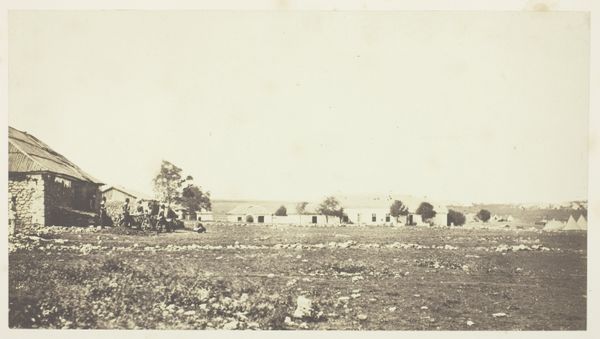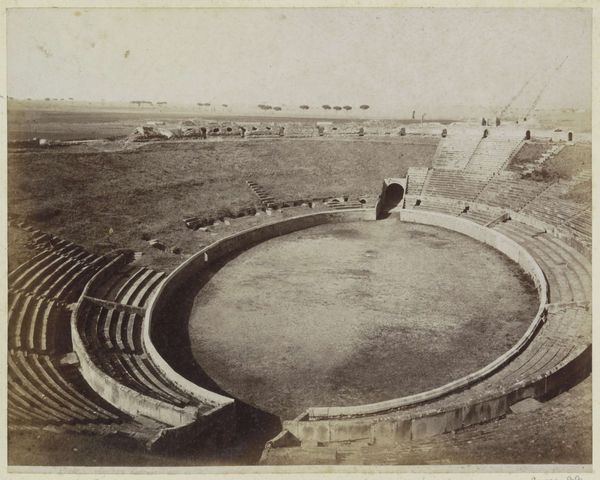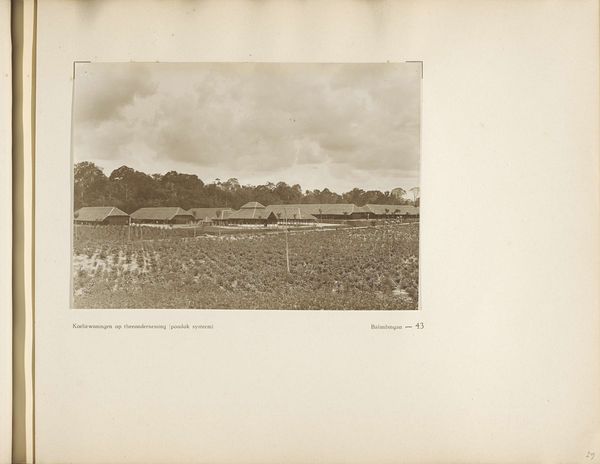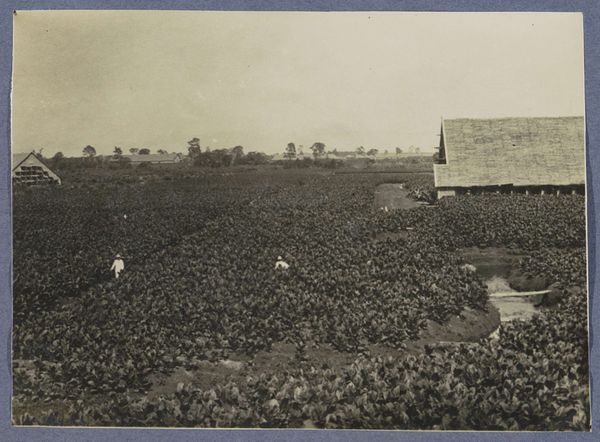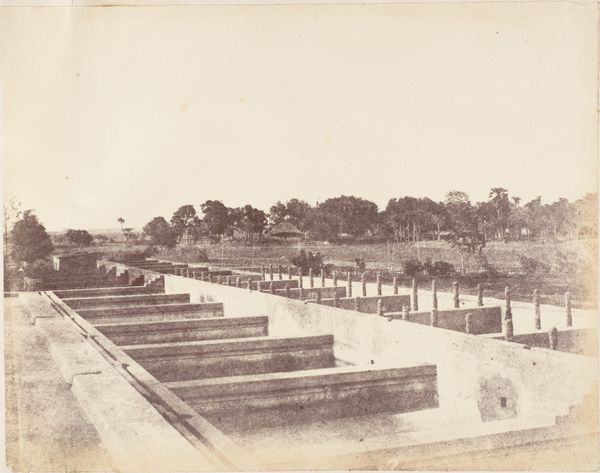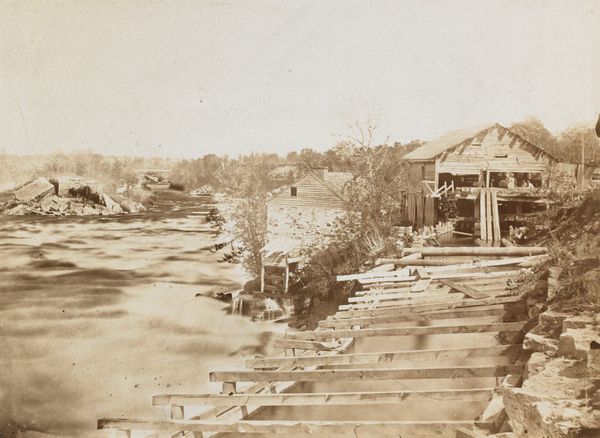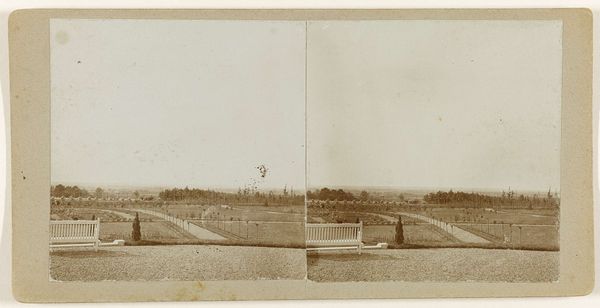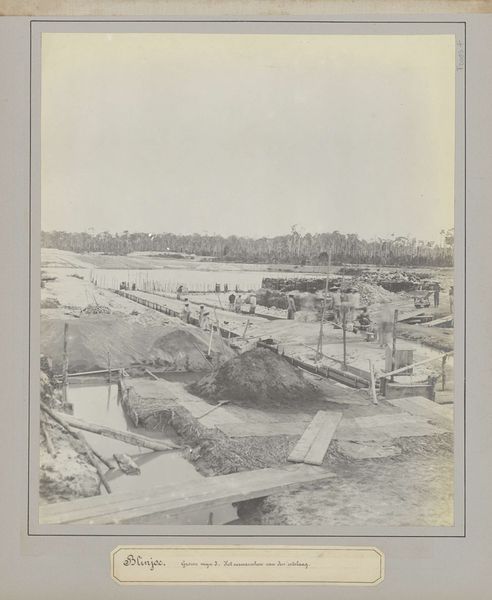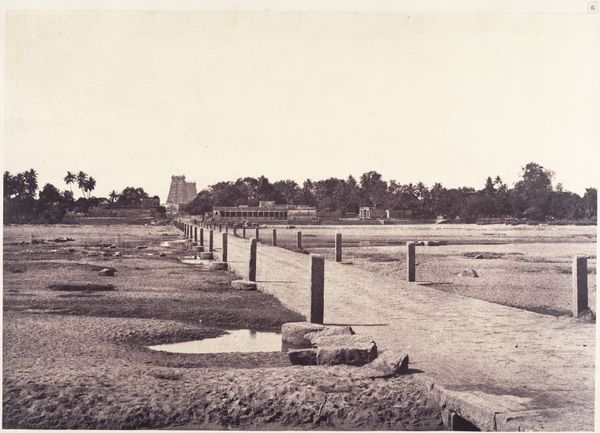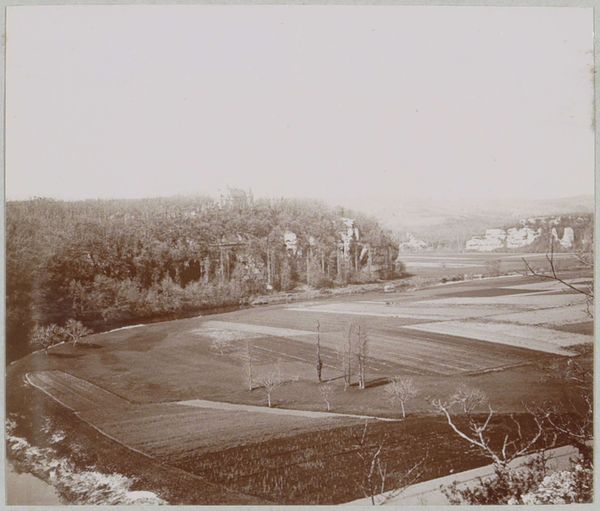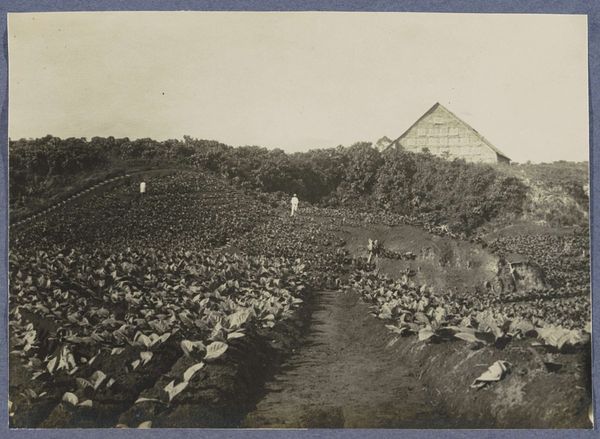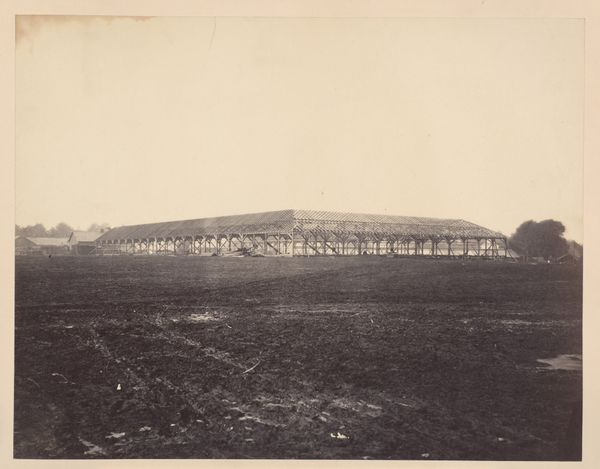
Tabaksveld op het Bindjey Estate van de Deli-Batavia Maatschappij op Sumatra (op dag van aanplant) c. 1900 - 1920
0:00
0:00
anonymous
Rijksmuseum
photography
#
landscape
#
photography
#
orientalism
#
realism
Dimensions: height 137 mm, width 189 mm
Copyright: Rijks Museum: Open Domain
Editor: Here we have an intriguing photograph from the Rijksmuseum's collection, entitled "Tabaksveld op het Bindjey Estate van de Deli-Batavia Maatschappij op Sumatra (op dag van aanplant)," dating from around 1900 to 1920. It depicts a tobacco plantation, and it strikes me as both serene and a little unsettling, given the seemingly endless rows of crops and tiny figures dotted across the landscape. What story do you think this photograph tells? Curator: It's a very potent image when viewed through a historical lens. The photograph provides a snapshot into the colonial economies of the Dutch East Indies. Notice the figures in white; likely overseers directing labor. The rigid rows speak to the industrialized agriculture being imposed. Do you consider what such a regimented field meant for local populations and land use? Editor: It definitely gives me pause to think about the implications of the plantation. It feels far removed from some idyllic countryside scene. This makes me wonder about the intention behind capturing an image like this in the first place? Curator: Good question. Photographs like this served various purposes. They documented colonial "progress," reinforcing European dominance and projecting an image of cultivated and controlled landscapes ripe for economic exploitation. It also possibly promoted investment in such ventures. Editor: So it was a way of visually solidifying power structures? Curator: Precisely. It highlights who had the power to commission such images and how they intended them to be viewed in Europe. The "realism" of the image makes the statement appear like fact. Consider whose narrative is being prioritized in these depictions. Editor: That's a perspective shift. Initially, the photo seemed like a neutral recording, but understanding the historical context makes it feel charged and deliberate. Curator: Exactly. Art doesn't exist in a vacuum. Examining art within its historical and social contexts encourages us to question assumptions and delve deeper into the complexities of power dynamics and cultural exchange. Editor: This has given me so much to consider about photography's role in shaping historical narratives! Curator: Indeed! Understanding this context gives a completely new way of regarding a photograph like this.
Comments
No comments
Be the first to comment and join the conversation on the ultimate creative platform.

